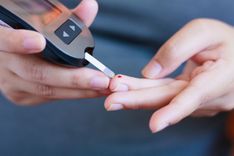How to make or break habits

A habit is a routine or behaviour that is repeated regularly and tends to occur subconsciously. Habits are often learnt through past experiences which resulted in a supposed reward. They are triggered by cues and habits make up everything we do. An example is when is begins to go dark, the low light acts as a cue for you to switch on the light, this is a simple day to day habit, the reward is the now adequate lighting which makes it easier to see. The habits we often think of are our routines around eating, exercising, day to day work and life. Another example of a habit which many people struggle to break, is eating a biscuit with a cup of tea. The tea acts as the cue, this triggers a craving for a biscuit, you crave the biscuit as this is a routine you have done before, the quick hit of sugar acts as the reward, the more this becomes a habit the more you will crave the biscuit.
The first step if you’re looking to build or break habits is to recognise what your habits are. You can do this by spending a day noting down your habits, from the easy tasks such as brushing your teeth, to the snacking in the afternoon slump, or spending slightly too much time on the phone. Once you have a list of your habits, rate them as positive, negative or neutral. This allows you to look at which habits you want to change and which habits are benefiting you.

So, you know what you want to do – now how do you build a good habit?
- Make it obvious – the cue or trigger needs to stand out, it needs to attract your attention and it needs to be something which you’re going to remember to do. If you’re wanting to read more, leave books around the house in places you often sit, or if you want to drink more water, again leave glasses of water in your common places, these little reminders can make it simple to build a habit.
- Make it attractive – it is important to know your why when building a habit, why is doing this important to you? What differences will it make? How will you feel if you build this habit? Also it needs to be something that you want to do, something that has more benefits to negatives. That is why it is important to do things such as try different exercise classes, if you don’t like the first one, keep trying until you find one you do. You can also pair more difficult habits with things you enjoy. If you want to meal prep each week but find it boring, why not watch your favourite tv showing the background or listen to a podcast you enjoy? You might be looking forward to meal prepping soon.
- Make it easy – when we start out building habits or making goals, we often look at the big picture, what do we want to achieve? This is good to do but it is also important to break your goal down into much smaller week to week goals. Make the goal so small and so easy you can’t say no. At the start, just try doing 1 of something 1 minute of exercise, 1 minute of reading, eat one healthy meal. It may seem easy and not beneficial at the start but starting small and easy is the best way to build a habit over time. Once you’ve got the routine of doing something it is easier to add to the goal.
- Make it satisfying – the main motivator with habits is that it needs to have a reward at the end of it, whether this is the endorphins from exercise, feeling organised and destressed after planning for the week, feeling full and satisfied after a meal, it needs to have a positive outcome. If you can’t see the reward at the end of it, why not plan one out? Once I have completed this exercise class I will… play a game, watch a tv show, phone a friend. Plan out immediate rewards, but focus on non-food rewards and things that make you feel good.

Now you have some ideas how to build a good habit, how do you break bad ones? Well, it is the exact opposite:
- Make it invisible – cue’s and triggers should to be hidden, we want to try and take the habit out of your thought process. For example, put foods away in a place you don’t look often, put your phone in the other room when working, make your bed so you’re not tempted to go back in. Reducing exposure and reduce cues around your habit will make it less tempting and build a supportive environment.
- Make it unattractive – this links in again with understanding your reasons why and what benefits will happen if you stop, why it isn’t currently supporting your goals and the negatives you have felt from the habit. Write this down to look back in times you’re struggling.
- Make it difficult – make your environment difficult for this habit, if you really want to do it you have to put in some effort. For example, don’t have premade cakes or biscuits in the house, if you really want something you have to bake it from scratch. Put things in difficult positions so that again you have to put some effort it. Simply by unplugging TVs and game consoles, that extra step of having to plug it in can be enough to deter you.
- Make it unsatisfying – if the process itself isn’t enough to put you off, you can do other things to make the outcome less rewarding. Being accountable with others if just one way which can make you think twice before performing a negative habit. Knowing you have to tell others and working together to support others can make the outcome less satisfying.

A key point to remember with breaking bad habits is that we don’t want to completely remove a habit, instead we want to swap a habit that maybe isn’t supporting our goals with a habit which is. Placing a positive habit in place for a negative one can make it easier to do.
References:
Information in this article is adapted from the book and website ‘Atomic Habits’ - James Clear.








